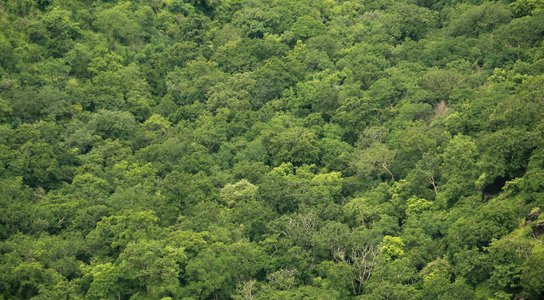Anyone interested in the Amazon and the world’s other tropical forests should be concerned about China. One reason, amongst many, is that it imports more tropical timber than any other country - yet has no legislation to ensure its imports are legal.
But there are signs China’s approach is changing. A recently published summary of a study co-authored by a Chinese government research institute identified future options to ensure Chinese timber imports are legal - the most important being mandatory measures such as laws and regulations. My colleague Beibei Yin describes these as “baby steps” offering a “flicker of hope.”
In a sense, China is lucky: there are precedents to build on. It has been 10 years since the Lacey Act Amendment came into force in the US, and five years since the EU Timber Regulation (EUTR) became binding in Europe. Both pieces of legislation ban trade in illegal timber, and companies in Germany, Sweden, the Netherlands and the UK were all recently fined for breaches under the latter, although enforcement in other significant importing EU countries is reported to be extremely poor. In addition, both Australia and Japan now have legislation banning illegal imports. The world is finally waking up to the fact that as long as timber buyers continue to fail to do genuine due diligence, the problem of illegal logging will persist.
China’s adoption of such legislation would obviously have major impacts on many countries around the world, not least Peru. Although Peruvian exports account for a comparatively tiny percentage of Chinese imports, China has overtaken the US and Mexico in recent years to become Peru’s top export market, according to the Environmental Investigation Agency (EIA). Exports are roughly three times greater than 15 years ago. That may look good on the balance sheet, but corruption and impunity have dominated Peru’s timber sector for decades and, although some advances have been made in recent years, the trade in illegal timber remains rampant. The social, environmental and economic impacts continue to damage the country and its people.
A recent report by the Centre for International Environmental Law (CIEL) suggests that Peruvian exporters have been deliberately taking advantage of China’s lack of legislation. According to CIEL, which based its research on 2015 data, it is almost as if two different export markets exist in parallel. That’s to say, timber deemed to have an “unacceptable risk” of being illegal is more likely to be exported to countries without legislation - i.e. China and Mexico - while timber deemed to have an “acceptable” or “tolerable” risk is more likely to be exported to countries with legislation - i.e. the US and EU.
So how much of Peruvian timber going to China is illegal? CIEL and EIA jointly estimate that 70% of the Chinese 2015 imports sourced from harvest areas inspected by government agency OSINFOR had an “unacceptable” risk of being illegal. They also report suspecting that 50% of the imports from areas which weren’t inspected had a “high risk of containing illegal timber.”
It is clear that China now needs to develop mandatory measures banning illegal timber imports as soon as possible, thereby meeting the standards of other major importing countries like the US and further consolidating its position as an emerging leader in global environmental governance.
It is clear too that this sounds a stark warning for Peru: exporting illegal timber to crucial markets like China might work for a while longer, but in the future it could be more difficult. This equally applies to timber that appears legal because it has the correct documents - as Global Witness recently exposed, such documents are often used to launder illegal timber. China’s “baby steps” on imports are therefore yet another powerful argument for why Peru must transform its timber sector for the better to target illegal logging or risk losing out in its top export market.

